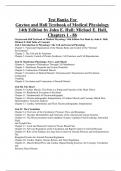Samenvatting
Summary literature & lectures introduction to migration studies uva
- Instelling
- Universiteit Van Amsterdam (UvA)
- Boek
- The Age of Migration
Summary of all readings and lectures of the course introduction into migration studies from the university of Amsterdam made in 2021
[Meer zien]













